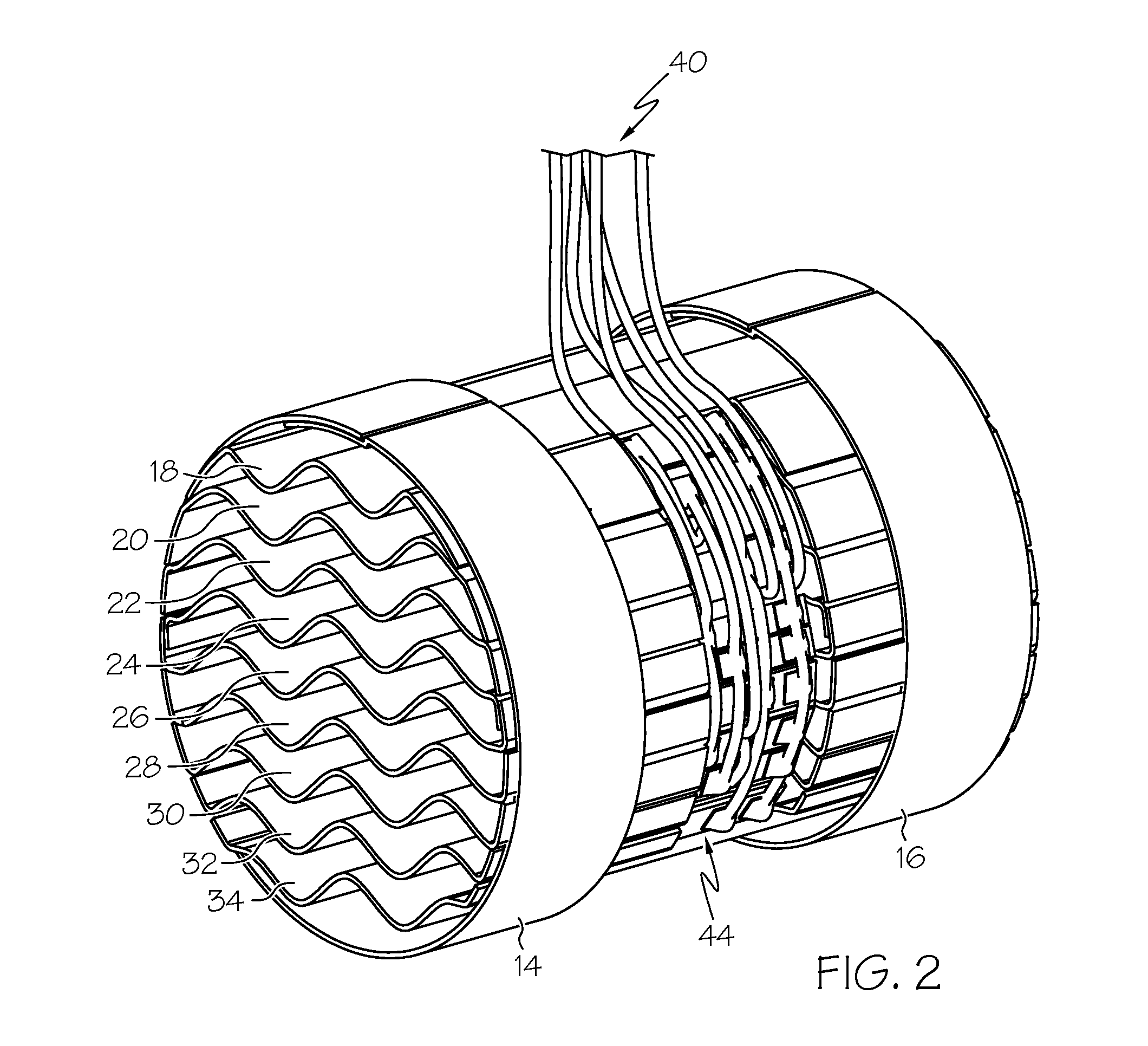Aircraft heating arrangement
a technology for heating arrangements and aircraft, applied in the field of aircraft heating arrangements, can solve the problems of increasing the pressure of the air, requiring even larger and more powerful fans, and complicated air heating systems, and achieves the effect of high resistance and high resistance material
- Summary
- Abstract
- Description
- Claims
- Application Information
AI Technical Summary
Benefits of technology
Problems solved by technology
Method used
Image
Examples
Embodiment Construction
[0016]FIG. 1 shows a heater 10 for heating air passing through a conduit 12 to an aircraft cabin. This air may come from outside the aircraft, from inside the aircraft, or from both. As seen more clearly in FIGS. 2-4, the heater includes first and second support rings 14 and 16. Each of the support rings 14 and 16 is generally annular in shape and defines an air passage there through. The rings 14 and 16 are each made of an electrically non-conductive material so that a plurality of serpentine heating elements 18, 20, 22, 24, 26, 28, 30, 32, and 34 can be supported by the support rings 14 and 16, with the heating elements being electrically isolated from each other and from other heater components. The heating elements are each made of a high electrical resistance material that is laminated between non-conductive layers. The high resistance material may be a nickel chromium alloy, such as for example Iconel high resistivity alloy. Each of the heating elements 18-34 extends across th...
PUM
 Login to View More
Login to View More Abstract
Description
Claims
Application Information
 Login to View More
Login to View More - R&D
- Intellectual Property
- Life Sciences
- Materials
- Tech Scout
- Unparalleled Data Quality
- Higher Quality Content
- 60% Fewer Hallucinations
Browse by: Latest US Patents, China's latest patents, Technical Efficacy Thesaurus, Application Domain, Technology Topic, Popular Technical Reports.
© 2025 PatSnap. All rights reserved.Legal|Privacy policy|Modern Slavery Act Transparency Statement|Sitemap|About US| Contact US: help@patsnap.com



